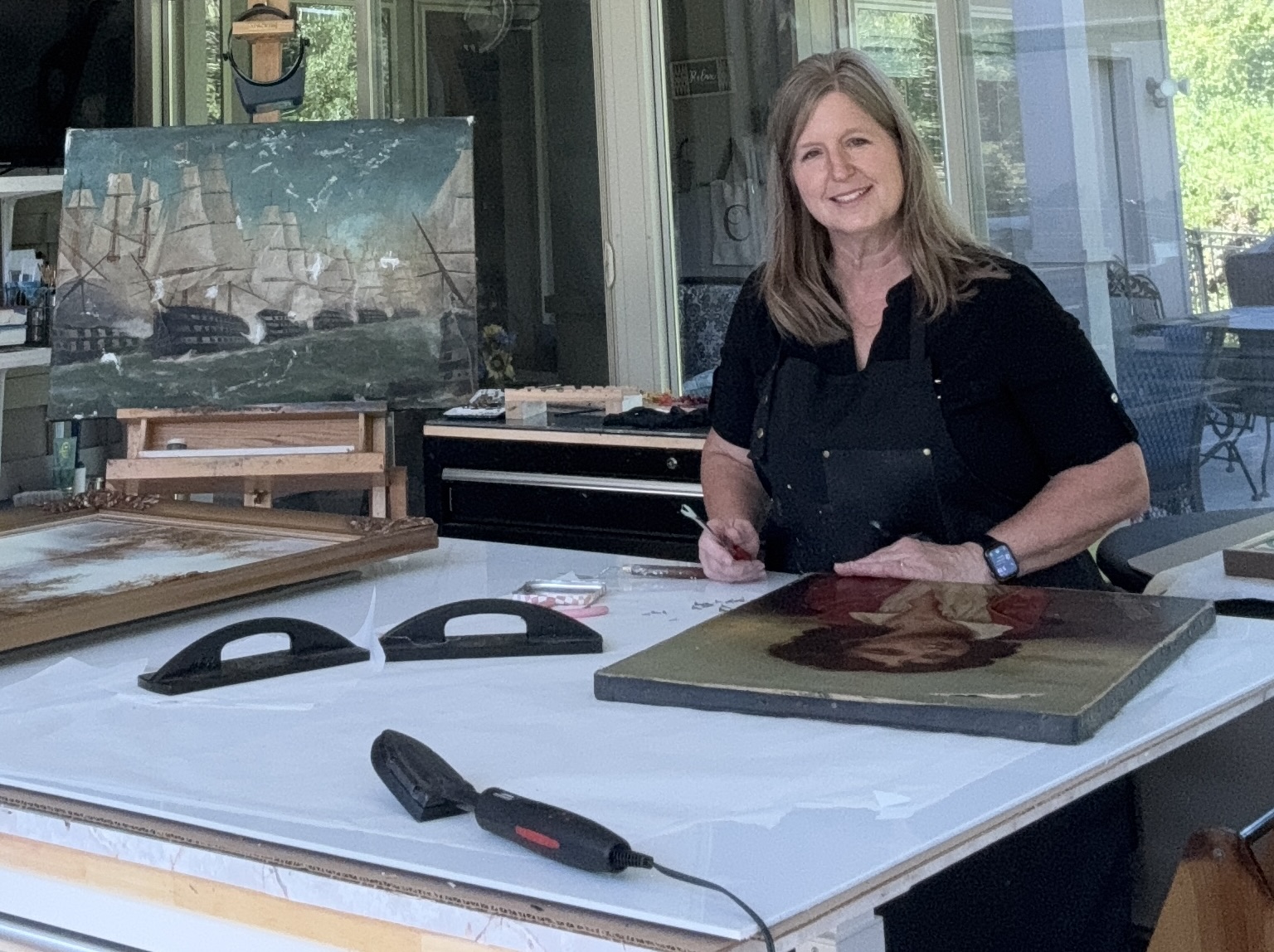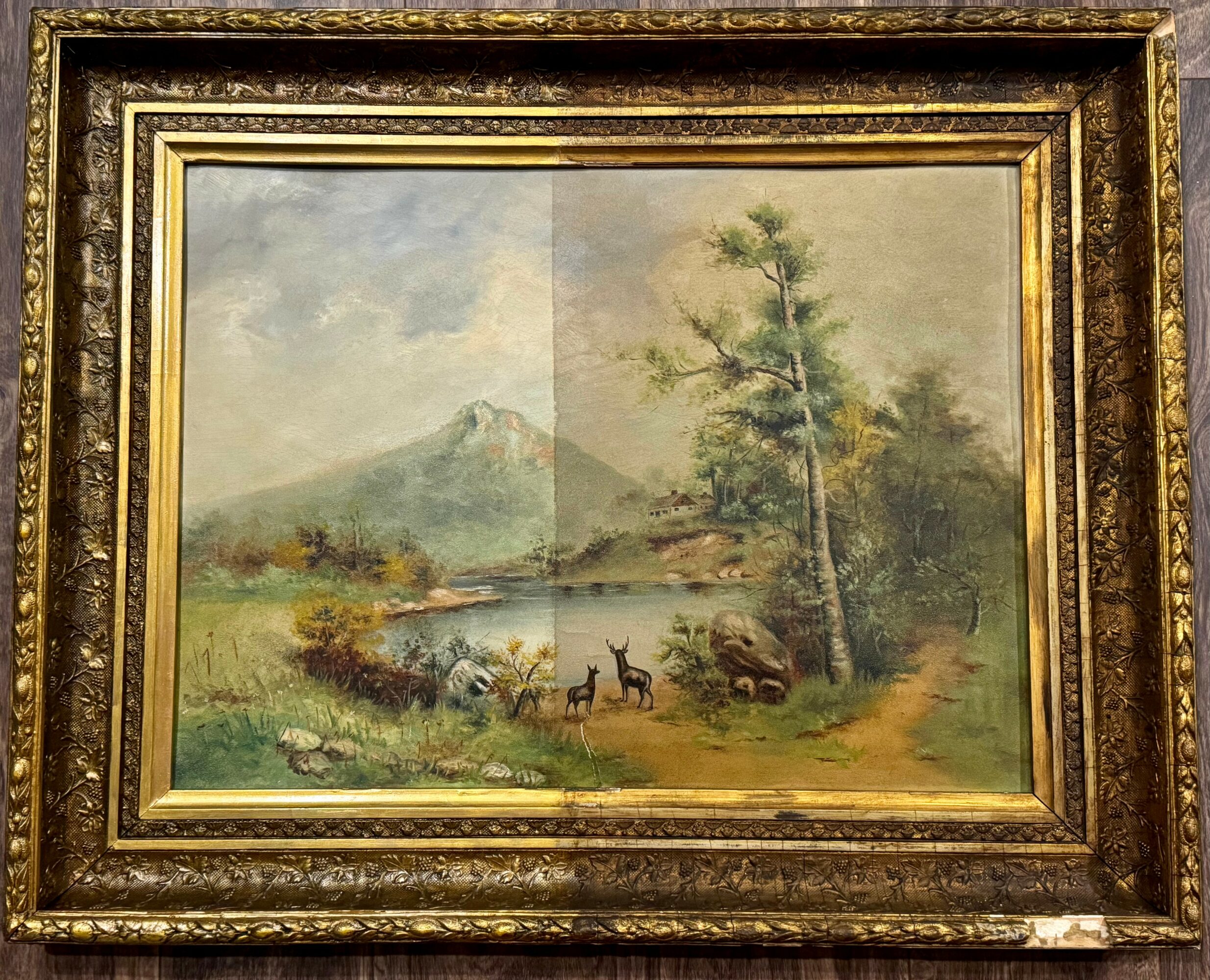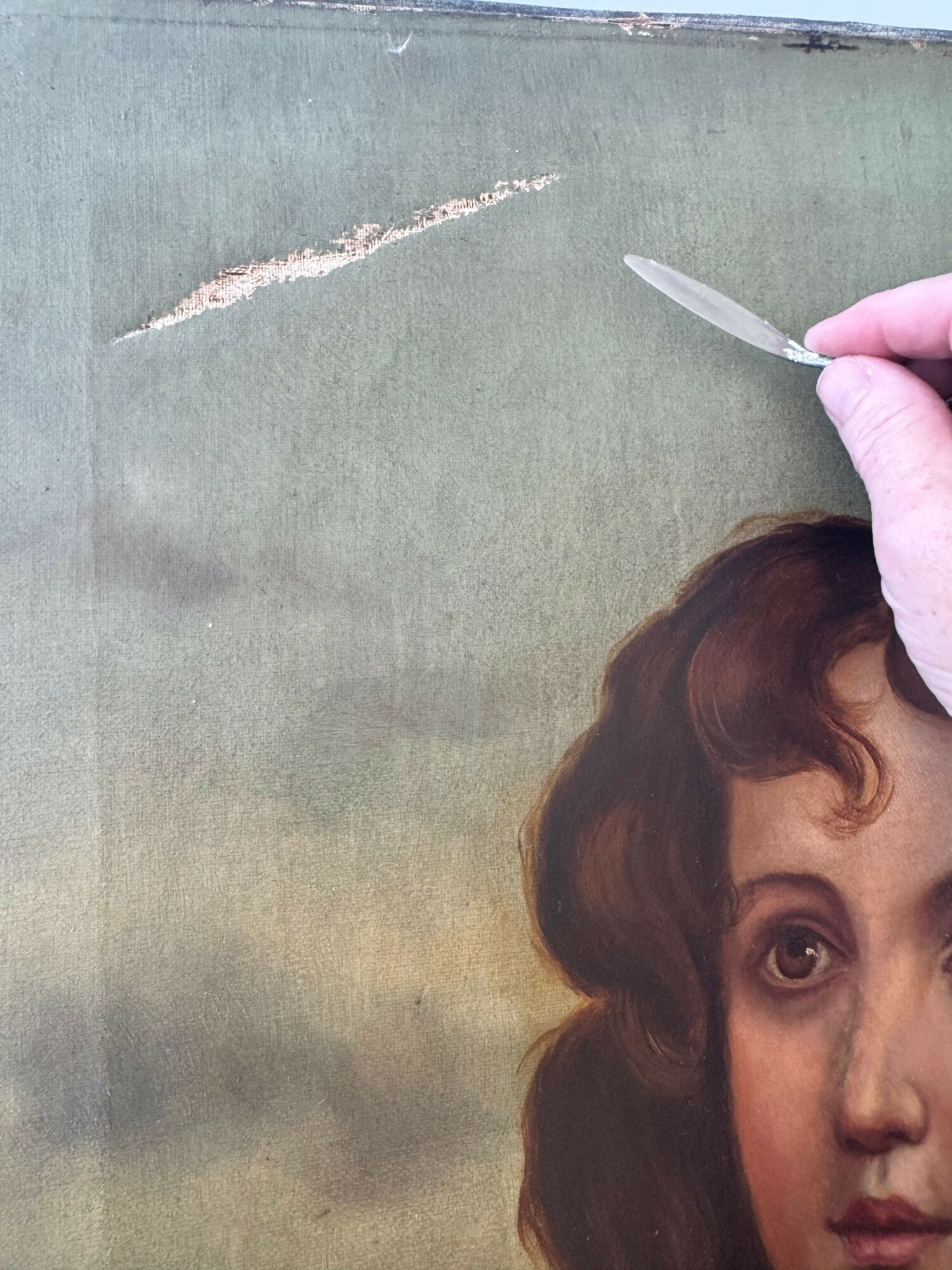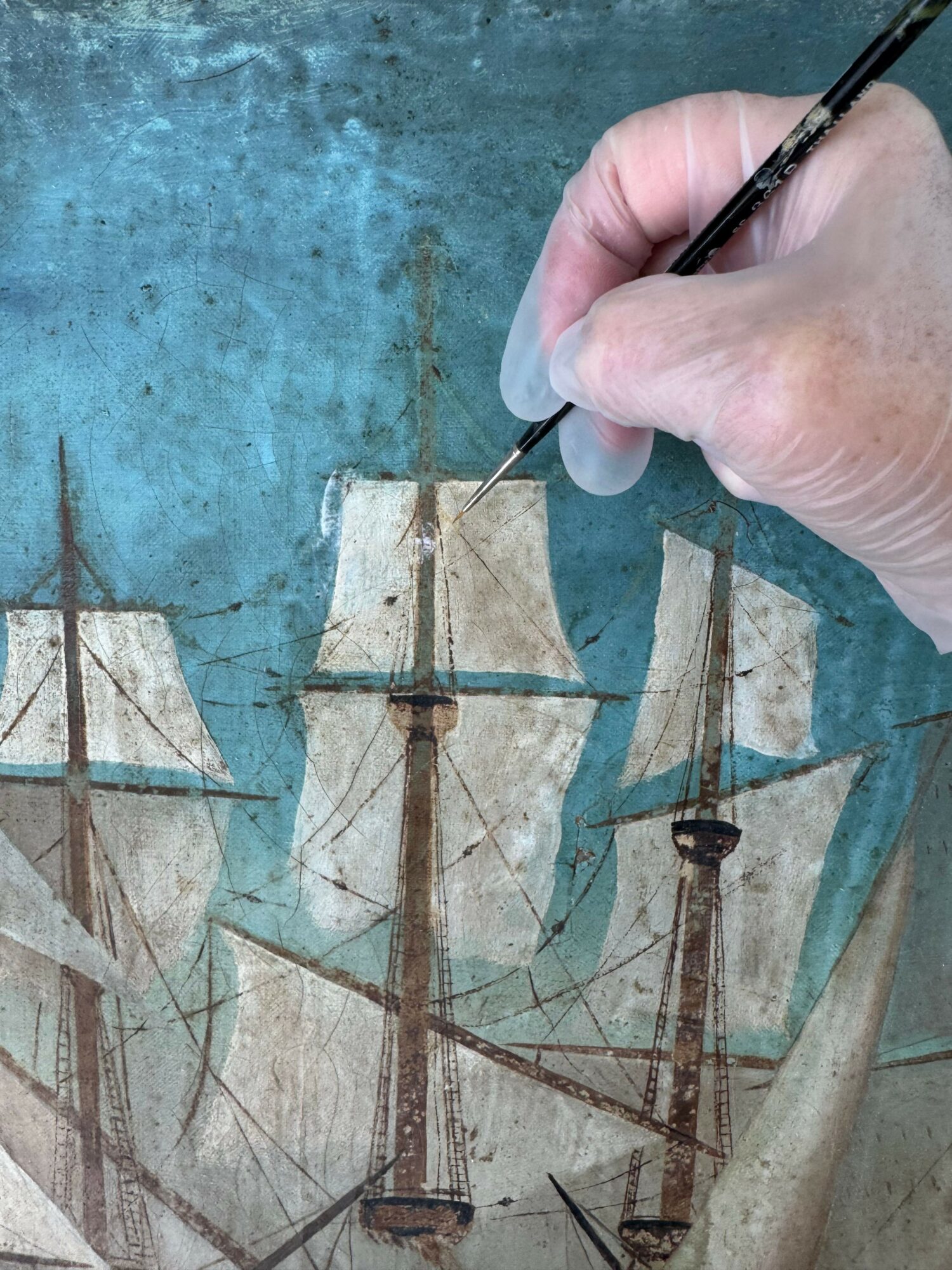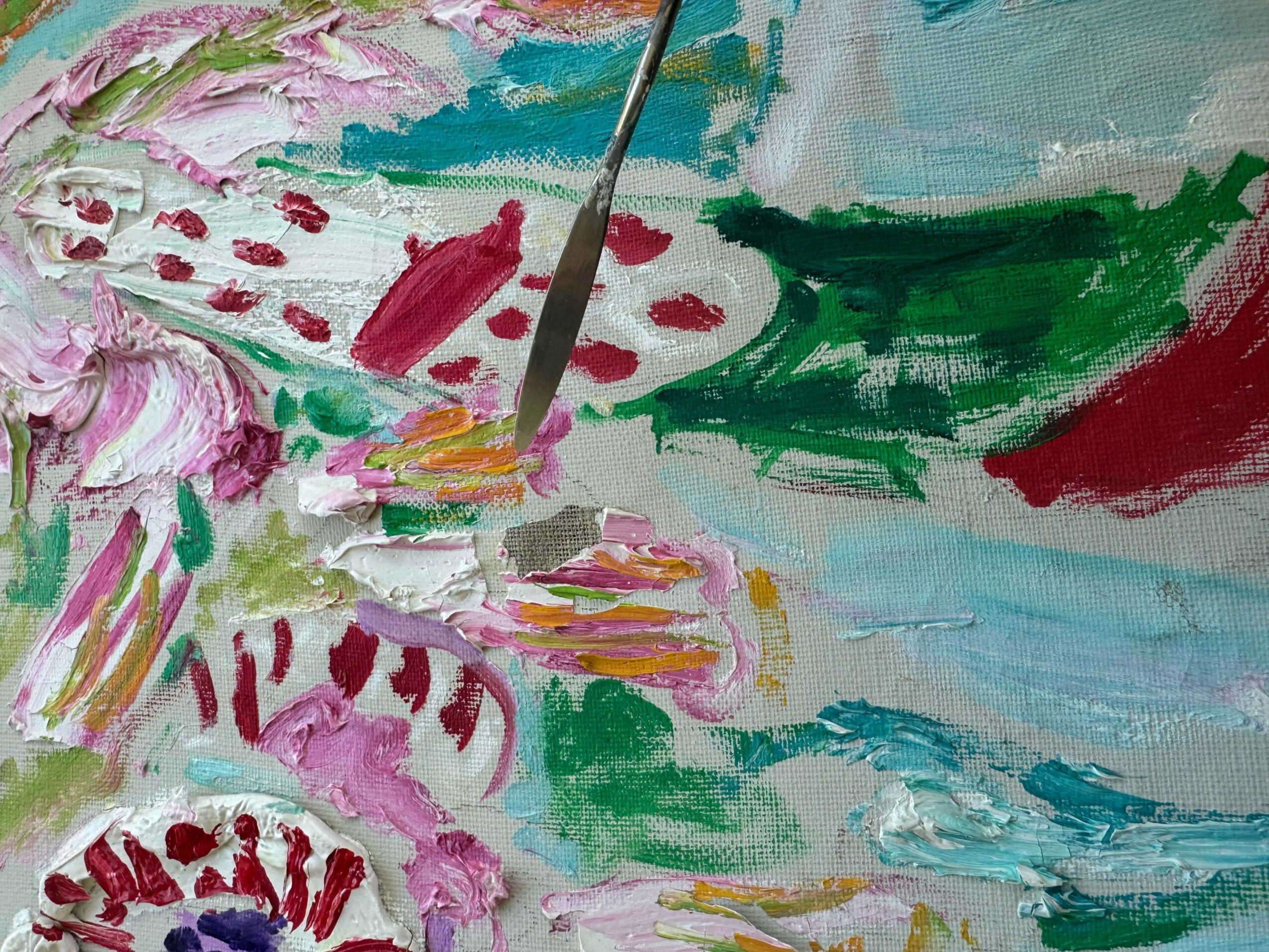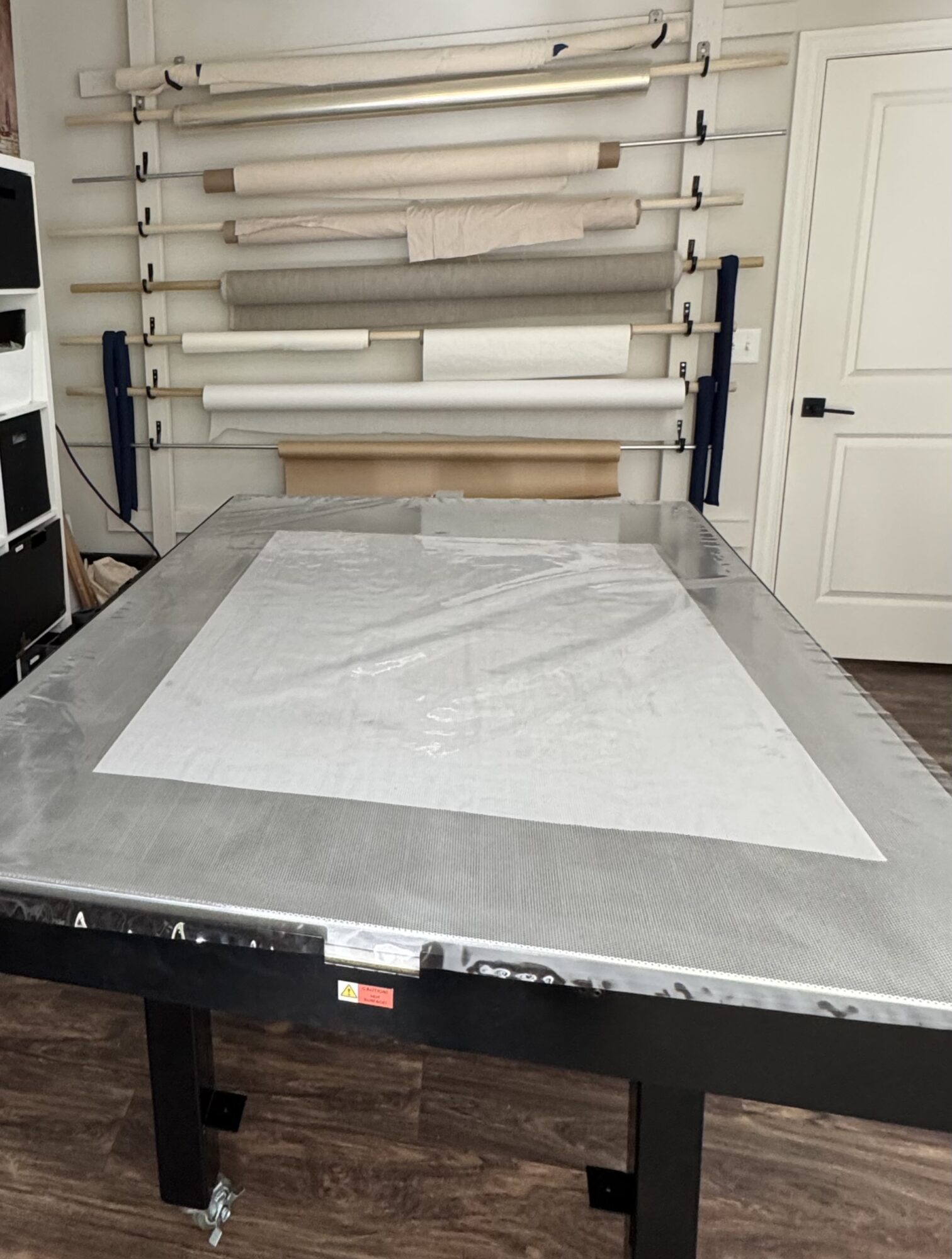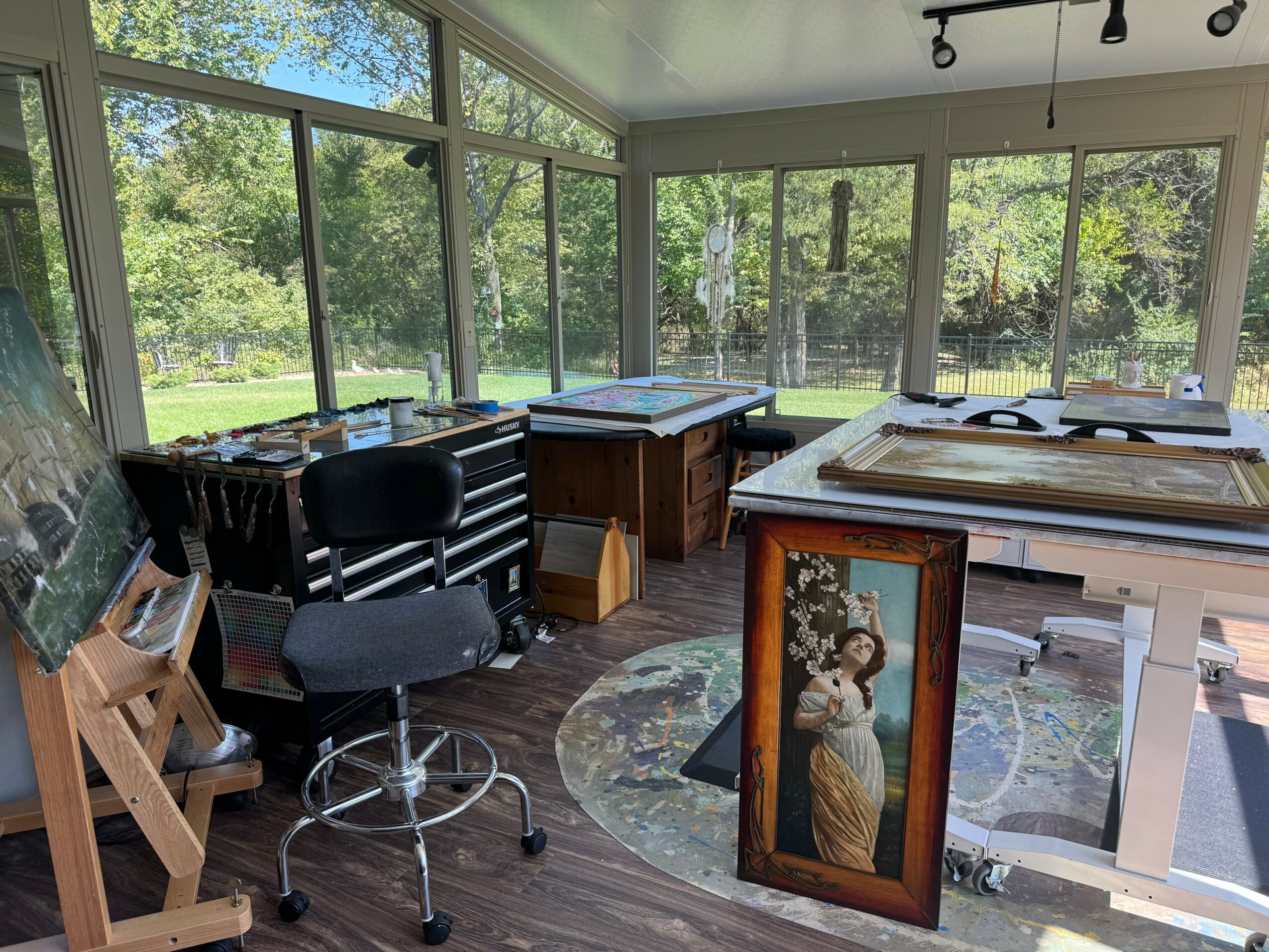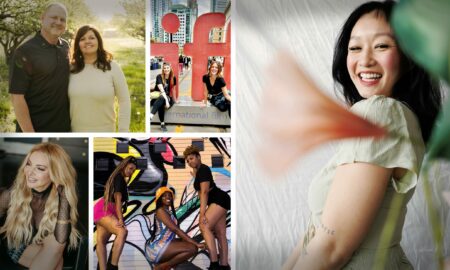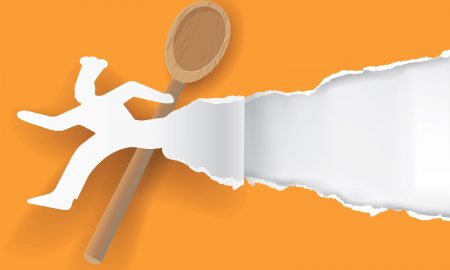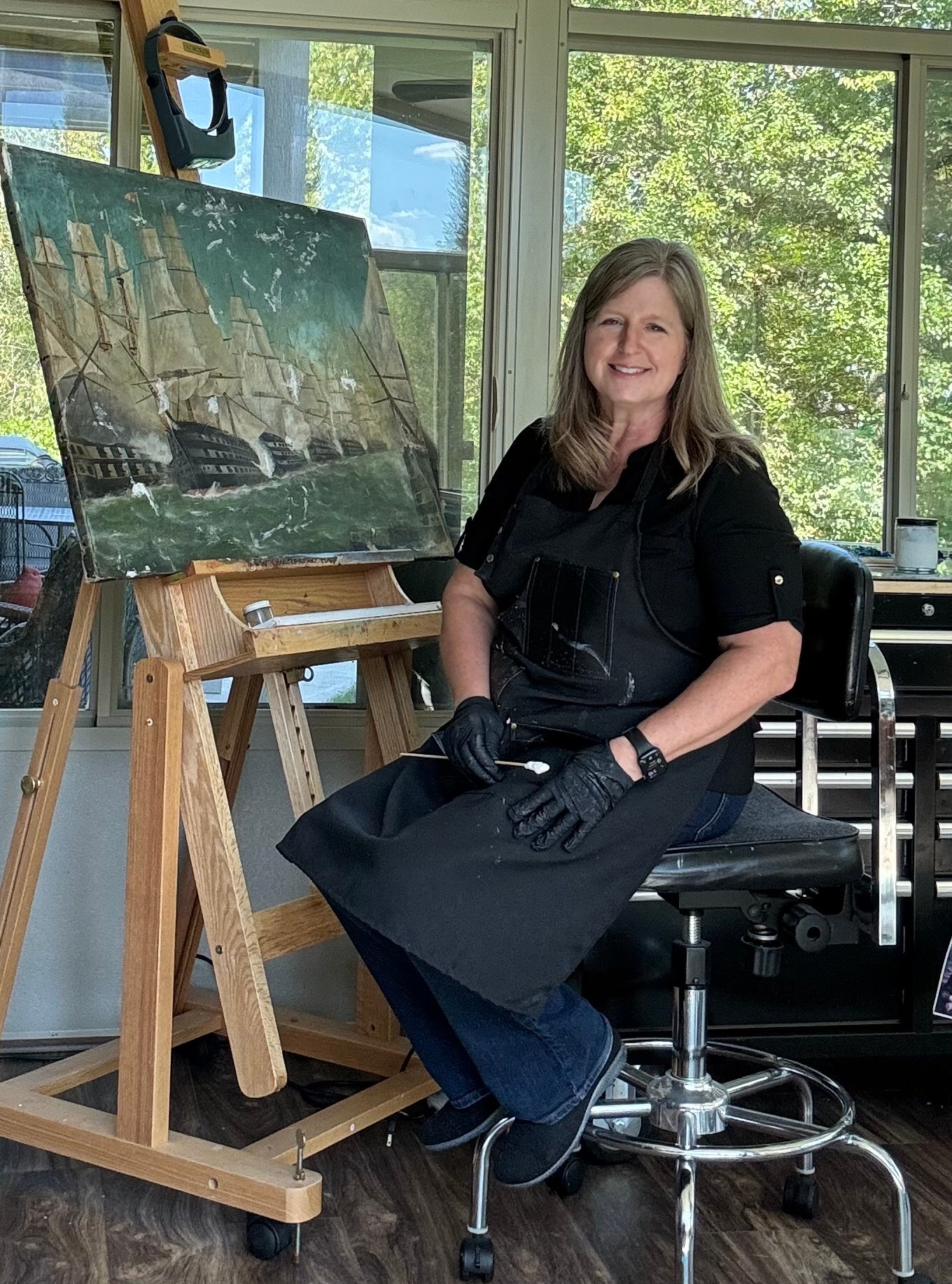

Today we’d like to introduce you to Melissa Chaney.
Hi Melissa, thanks for sharing your story with us. To start, maybe you can tell our readers some of your backstory.
Art restoration is a specialized practice of repairing and conserving artworks to preserve their appearance and structural integrity. A conservator-restorer performs this work, which can include stabilizing damaged materials, cleaning surfaces, inpainting or retouching missing paint, and reconstructing lost elements, using scientific and artistic knowledge to ensure minimal impact on the original work. The goal is to prolong the artwork’s life and ensure it can be studied and appreciated by future generations.
I am an artist and fine art restorer, practicing the trade in my home studio in Raymore, Missouri. I attended the University of Central Missouri and the Kansas City Art Institute earning my BSE in art education, later earning an MSE and then Specialist degree in painting. I taught for 31 years in the Kansas City area at both the high school and college level. Later my love of art and history took me on to painting murals for corporate and private entities and then working as a conservator technician in a prestigious restoration studio in the Kansas City area. I am committed to the meticulous preservation of cultural heritage, a dedication cultivated through years of a wide range of hands-on experience. I ensure that I remain at the forefront of the field by actively participating in development courses, seminars, and workshops as a member of various organizations such as The American Institute for Conservation (AIC), Conservators in Private Practice (CIPP) and The Intermuseum Conservation Association (ICA). This ongoing commitment to learning keeps my skills in line with the latest conservation methods. I work with antique dealers, auction houses, insurance companies, small museums and private clients.
Can you talk to us a bit about the challenges and lessons you’ve learned along the way. Looking back would you say it’s been easy or smooth in retrospect?
The overall obstacle that I face is education of what service I provide. No one really knows what art restoration is. Restorers must have in-depth knowledge of art history, materials, and techniques to treat specific types of art, in my case paintings. Clients call sometimes seeking help with a work on paper or family photographs. I specialize in restoring paintings and must refer them to other art restorers specializing in their specific media.
Appreciate you sharing that. What else should we know about what you do?
Before any intervention, the conservator assesses the condition of the artwork and analyzes the materials present to determine the best course of action. Think of your artwork as a patient at the doctor. Every art piece or patient is unique and has its own personal course of action or treatment that needs to be followed for good health.
Cleaning involves carefully removing dirt, dust, grime, and discolored varnish layers that obscure the artwork’s original colors and details.
Sometimes art needs structural repair. This can involve reattaching flaking paint, mending tears in canvases, or stabilizing fragile elements to prevent further deterioration.
Inpainting and retouching involves using stable pigments to fill in missing areas of paint, carefully matching the artist’s original colors and brushwork. This only is performed in the areas of loss on the art.
A final layer of varnish may be applied to protect the artwork and enhance the colors, creating a barrier between the original and the retouching.
A key principle of restoration is reversibility, meaning that any new additions are made in a way that can be distinguished and removed by future conservators, ensuring the original artwork remains intact.
If we knew you growing up, how would we have described you?
I can certainly relate to families that collect fine art. As a child my family prioritized art. From drawing and painting to ballet and guitar lessons; I did it all. My earliest memories are of my mother oil painting with friends in the kitchen to Bob Ross videos. Later she took up wood carving and really blossomed in her skills. My mother’s sister JoAnn also crafted. She taught me embroidery, plastic canvas craft and how to sew clothes for my Barbie dolls. My grandmother Madeline also taught me to knit.
It wasn’t just the females of the family who were creative. My father tied his own flies for fishing and played with his leather craft in his spare time. As a teen, my father added a family room addition to our home which included art spaces for my two sisters and myself. With this home expansion he hand-built a desk for my two sisters and myself in which to create paper dolls and puppets for plays that we would put on for family and friends.
In art school I didn’t have a private studio on campus. Art major work spaces were shared, but college is where I met my future husband, Larry. My husband and two grown boys have always been a valuable part of my career as an artist. I went on to earn a BSE then MSE in art education and painting.
As a career I taught art classes at the public schools in the area. My free time was spent creating lessons and examples for class. I used every medium imaginable as I taught drawing, watercolor, acrylic painting, printmaking, collage, ceramics and art history. My company Chaney Fine Art was soon born where I taught art lessons in my home and selling my art on the side during the summer school break. I continued to grow as a professional earning a specialist degree in painting. For thirty years in art education growth mindset was a focus of mine. I encouraged students to believe that they can improve their intellectual abilities through hard work. With support in the art room, they become more resilient, creative problem solvers believing that they can achieve anything that they desire.
After retiring from teaching art, I took a job as an art conservator in a prestigious restoration studio in the Kansas City area. The head conservator took me under her wing to learn the trade of repairing and cleaning fine works of art. My desire for growth took me forward into the world of running a business. The transition from artist and teacher to business owner has been a dream. I love setting my own schedule and channeling my love of art into helping others save and repair theirs.
Upon the death of my parents after the pandemic I decided to spend some of my inheritance money in their memory. After all, they were the ones that fostered the beginnings of my creativity. What better way to enhance my art practice by designing the perfect space to create art and remember them. My husband and I decided to add a four-season room onto the back of our home.
My current restoration studio is a 16’ by 16’ four season room added onto a 14’ x 16’ basement bedroom complete with state-of-the-art equipment. I am able to complete entire examinations with UV and microscopic inspection. I use only museum grade materials including a heat/suction conservation table and good old-fashioned handiwork. An office near my front door is where I conduct business and meet with clients. I have an assistant who helps me with large projects. Someday I may outgrow my home restoration studio and may need a storefront. In the meantime, I enjoy the natural light, and fresh air while I complete restorations out of my home.
As art has been such a big part of my life; my entire life. I definitely can relate to the client who brings me an heirloom piece. Just seeing the sheer happiness when they see great grandmas painting cleaned and repaired is worth my lifestyle in gold.
Pricing:
- As stated above each art piece is unique in its needs of treatment. I provide FREE estimates as to how I can assist you with the restoration and conservation of your project.
Contact Info:
- Website: https://www.chaneyfineart.com/
- Instagram: https://www.instagram.com/chaneyfineartrestoration/
- Facebook: https://www.facebook.com/Chaneyfineartrestoration
- LinkedIn: https://www.linkedin.com/in/melissachaney/
